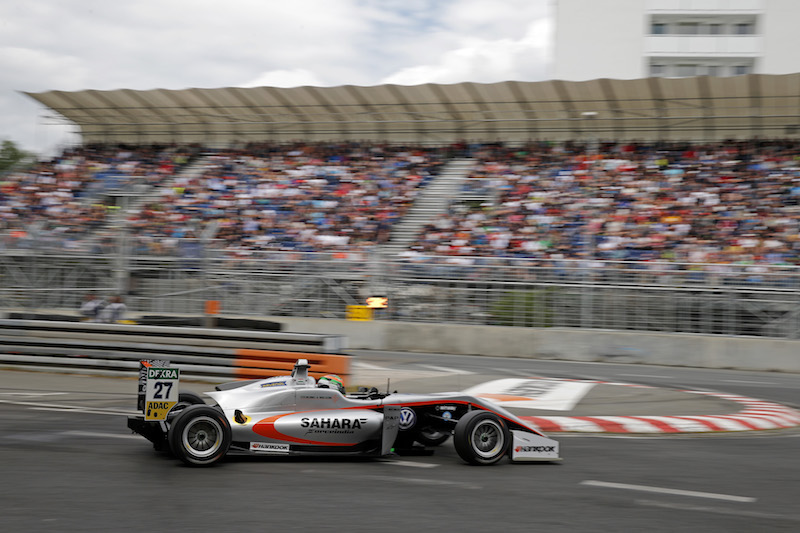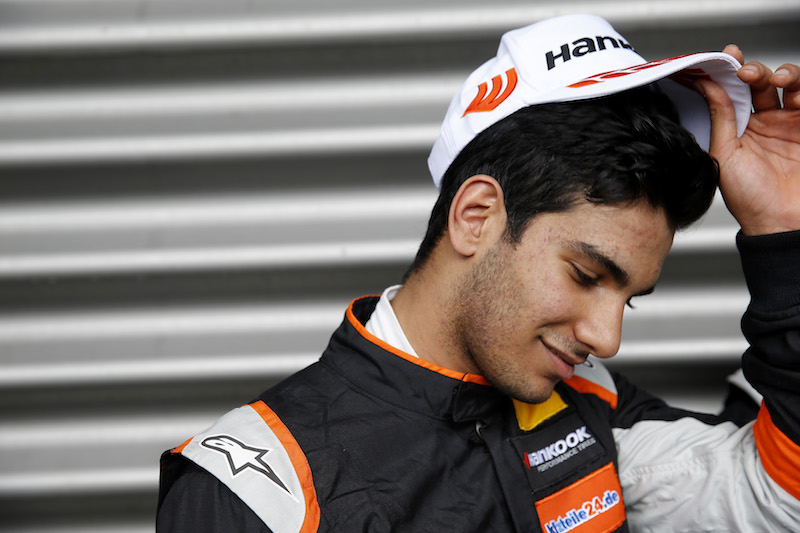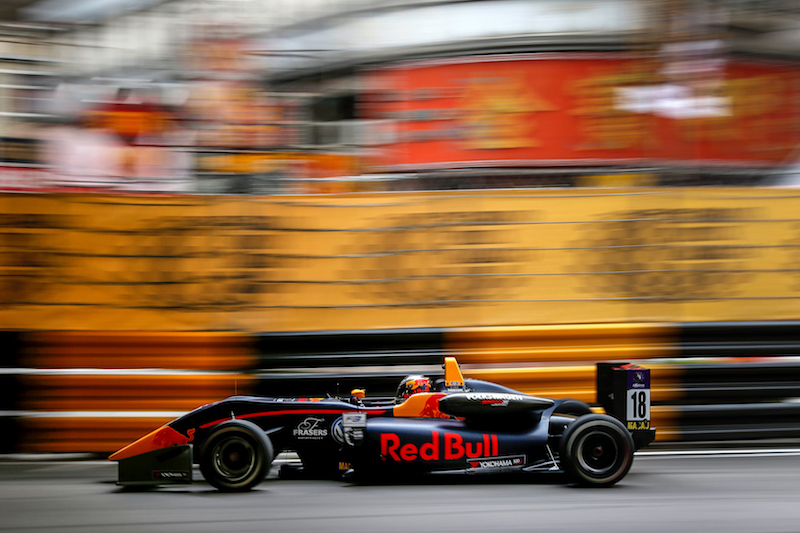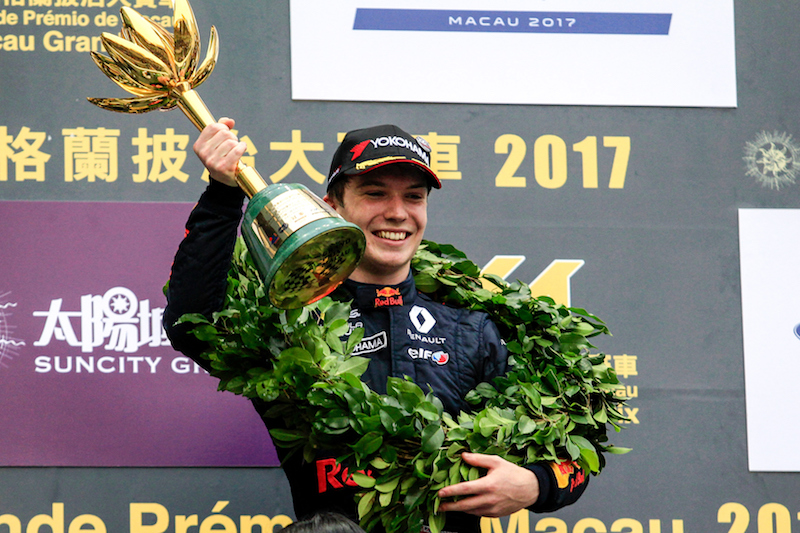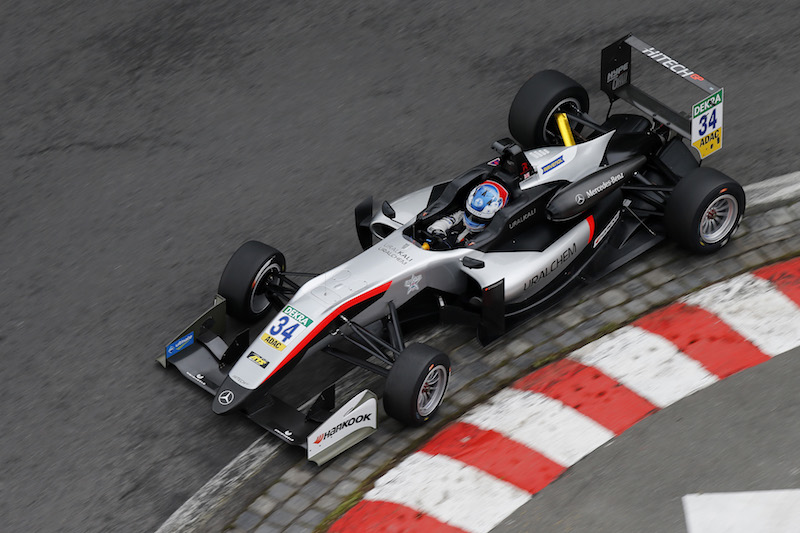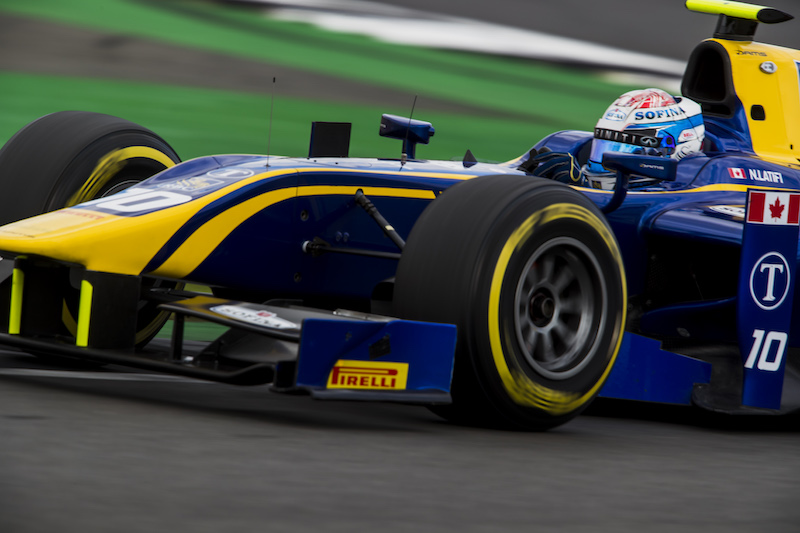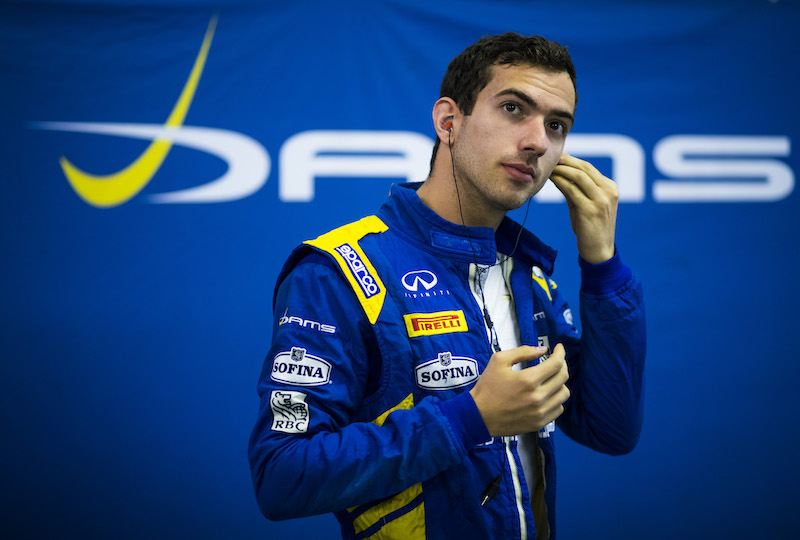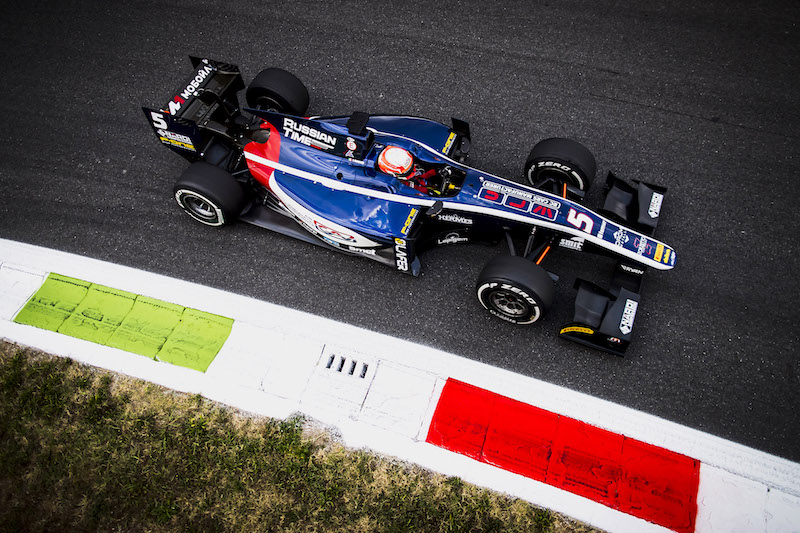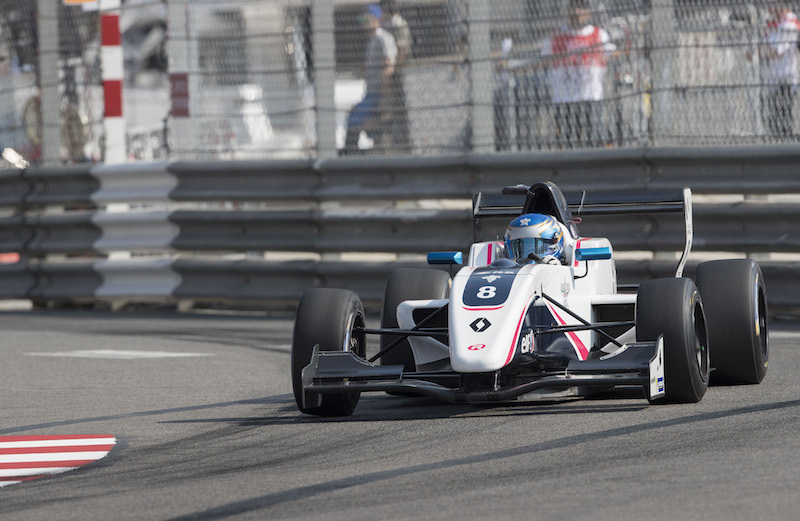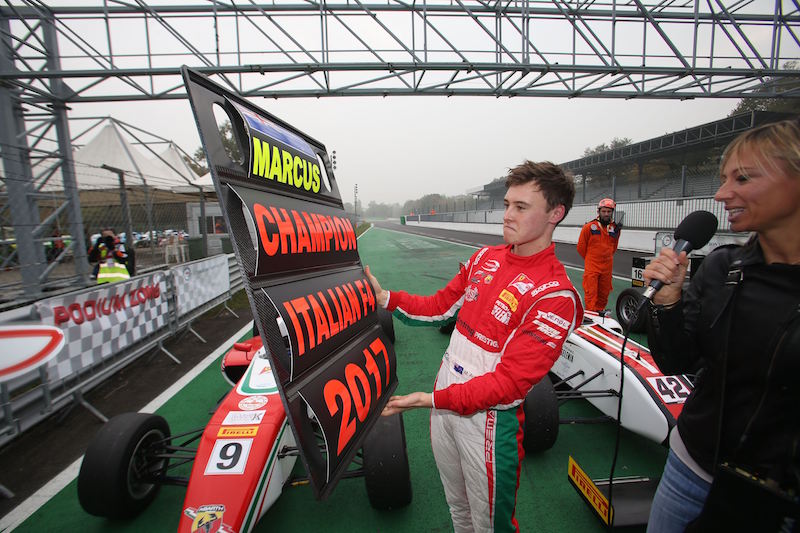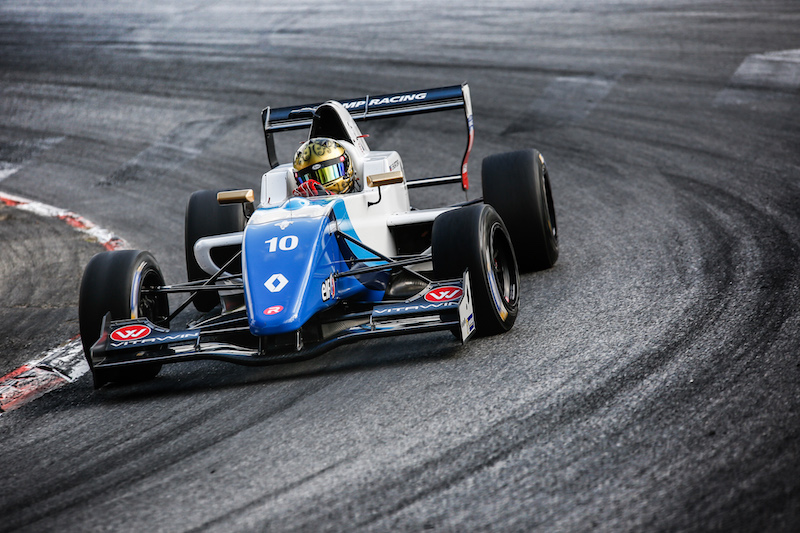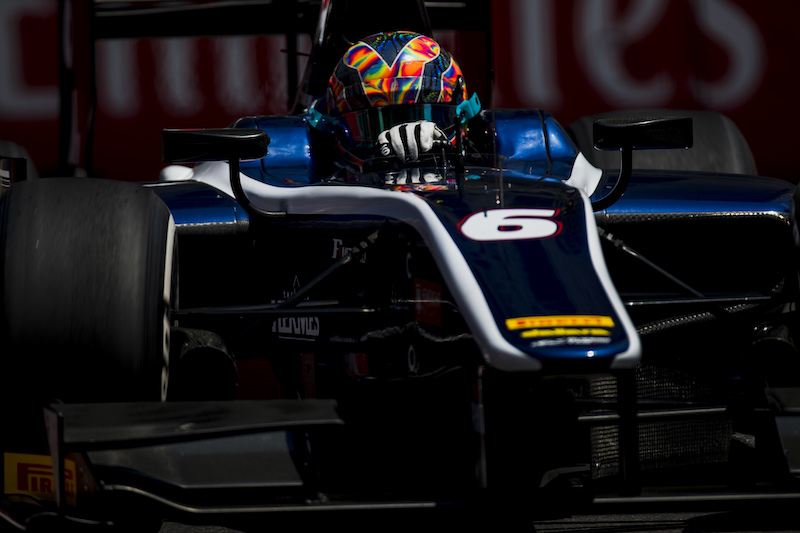The penultimate instalment of our look at the top 50 performers in junior single-seater racing in 2017 features drivers 20 to 11.
See also
Part 1: 50 to 41
Part 2: 40 to 31
Part 3: 30 to 21
20. Jehan Daruvala
New entry
Sixth in European F3
Off the back of a lacklustre second season in Formula Renault, Daruvala began 2017 as quick but inconsistent in the Toyota Racing Series, failing to mount the title challenge that his speed and experience warranted.
But over the rest of the year his ability was clear to see with a strong first season in European F3, where he won a race and was the second best rookie to Carlin team-mate Lando Norris.
The Force India protege was on the pace from the off at Silverstone, and took pole at just his second outing at Monza. After a podium there and another at the Hungaroring, he grabbed a win on his visit to the Norisring after getting the better of Maxmilian Gunther.
Being critical, the rest of the season was a little more ‘average’, containing five fifth places and no more podiums, but overall he was remarkably consistent for a rookie, finishing all 30 races – the only driver to do so – and scoring points in 25 of those.
He will be capable of more podiums and wins when he returns for a second season in F3 with Carlin next year, and will have to start as one of the numerous possible title contenders.
19. Ferdinand Habsburg
New entry
Seventh in European F3 and Macau star
Habsburg was narrowly outscored by team-mate Daruvala in the European F3 standings but gets the edge here because of the impressive progress he made over the year, as well as the flair that earned him the plaudits of the motorsport world for his win-or-bust bid for Macau Grand Prix victory.
Like Daruvala, Habsburg had come into 2017 off the back of a disappointing run in Formula Renault, and was even more underwhelming than his team-mate in the Toyota Racing Series. He had shown well in Dallara F3 machinery in Euroformula Open last year, but was still expected to struggle relative to Norris at a Carlin team that had a poor 2016.
When Carlin was dominant in round two at Monza however, Habsburg beat Joel Eriksson to the podium, and he just seemed to grow in confidence from there.
He took a sensational win at Spa from eighth on the grid despite an injured hand and was a consistent presence in the top six after that, adding further podiums at Zandvoort and Hockenheim.
Habsburg carried that momentum to Macau, where he had an anonymous debut 12 months earlier, capping off his remarkable progress by nearly winning the biggest race in junior single-seaters, putting pre-event favourite Norris firmly in the shadows.
With his reputation and self-belief in his ability growing, he is also increasingly at home in the F3 car and at Carlin. That could make him a serious contender in 2018.
18. Dan Ticktum
New entry
Macau Grand Prix winner, GP3 and Eurocup star
There were many good storylines in junior single-seater racing in 2017, but perhaps none were as amazing as that of Ticktum, who ended his comeback year as Macau Grand Prix champion, McLaren Autosport BRDC Award winner and serious Formula 1 prospect.
He had shone on his Macau debut 12 months ago but after joining the Red Bull Junior Team – with Helmut Marko putting faith in the potential he and others saw in 2015 before he earned himself a one-year ban – it was in the Formula Renault Eurocup where Ticktum would spent much of the year.
Single-handedly leading an Arden team that was new to the category wasn’t easy, and initially left him on the fringes of the top 10 in qualifying, but with his input, there was clear progress. Ticktum shone in wet conditions, leading to podiums at Silverstone and the Nurburgring and a pole in Hungary that he managed to convert into victory in dry conditions, where his and the team’s pace improved in the middle of the year.
Spa and Barcelona at the end of the season were more difficult, but by now Ticktum was starring in GP3. He challenged for fourth place on his debut at Monza, and then achieved that result at Jerez where he was clearly the best non-ART driver with a DAMS team that struggled badly before his arrival. Denied a race two podium by a stubborn Niko Kari, he made it there with a charging drive in Abu Dhabi to end up 11th in the standings after just five starts.
A week earlier came that Macau triumph. Despite having not raced an F3 car all year, the 18-year-old was among the frontrunners all weekend, and learnt from a disappointing qualification race to make sure his tyres lasted. A stunning double overtake ensured it was he, not long-time rival Norris, who benefited from the final-corner drama.
With his talent confirmed by his McLaren Autosport BDRC Award, in which he wowed the judges in the on-track assessment, Ticktum will be back in F3 full-time next year – a move partly motivated by his fondness for the F3 car but also because Red Bull wants him in the simulator in Milton Keynes during F1 weekends. It wouldn’t be a surprise if he goes one better than Joel Eriksson did with Motopark.
17. Jake Hughes
Up 5
Fifth in European F3
Hughes’ European F3 campaign with Hitech was not as strong as he would have wanted it to be, but he still used the opportunity to show his talent once more.
Although he got a podium finish on home soil at Silverstone, the opening rounds were difficult for Hitech as it struggled to get the best from the new mandated aerodynamic kit. Performances would improve however, with Hughes leading the team’s charge forward despite being in his first full season in F3.
He was leading from pole at the Norisring when he was hit by Norris, before then being innocently taken out by Callum Ilott and Maximilian Gunther in two of the races at Spa.
Things finally came together at the Nurburgring, when he got that maiden win as well as a pair of seconds to Norris. Then, in frustratingly familiar fashion, he didn’t even score at the Red Bull Ring when two of his team-mates made the podium – an engine change partly but not entirely to blame.
Still, fifth in the standings was well-deserved and probably the maximum that could have been achieved in the circumstances.
It was a shame that he and Hitech didn’t return to Macau – after his debut performance in 2016, he could have been another contender for victory if luck allowed it.
But the focus now is on a return to GP3 with ART, thanks to the strong relationship he built at Hitech with Nikita Mazepin. Given his form with DAMS last year – he’s the last non-ART driver to qualify on pole – he has to be considered a title favourite.
16. Nicholas Latifi
New entry
Fifth in F2
Latifi made a huge step forward in 2017 to become a frontrunner in Formula 2 with nine podium finishes – a figure bettered only by Charles Leclerc and by the Canadian’s DAMS team-mate Oliver Rowland.
DAMS as a team made a clear improvement after a difficult 2016, but Latifi progressed on top of that to perform on a level close to his esteemed team-mate Rowland, even if the Briton’s bad luck was a factor in him finishing the season only 13 points behind.
Throwing away a sprint race win in Barcelona because he was distracted by losing a wing mirror was embarrassing, but come Silverstone he had put that right. In the meantime, he had twice finished third in Baku and then genuinely beaten Rowland to second place in the Red Bull Ring feature race, even reeling in Leclerc late on.
Qualifying – previously his strong area – was a little weak, aside from third place in Baku and a fine second to Leclerc in the rain at Spa, after which an engine failure prevented him from taking up his place on the grid.
The Canadian has used his significant funding to get outings with the Renault F1 team in the past couple of the years, but his performances this year have shown he’s capable of making it to the top.
Having only just collected his first superlicence points, he needs to return to F2 in 2018 and achieve at least a similar result: with a new car to learn and a host of new talent arriving on the grid, doing that will prove his ability.
15. Luca Ghiotto
Up 2
Fourth in F2
On first glance, Ghiotto’s second season in the series formerly known as GP2 can seem a little underwhelming, but he was consistently good across the year. He finished every race, and scored points in all but two of them.
That left him only 25 points behind the championship runner-up position occupied by team-mate Artem Markelov, and was crucial to Russian Time’s teams’ title success.
Pre-season, he would have been expected to have outperformed Markelov, but the fact that he didn’t was probably more due to the big step forward his team-mate took. Consider also how comfortable Markelov was by now in his surroundings in a team that’s literally built around him, while Ghiotto was – incredibly – working with a foreign team for the first time in his single-seater career.
Russian Time was generally not a force in qualifying – Markelov’s Abu Dhabi pole was the team’s first since 2013 – and between front row starts at Barcelona and Jerez, Ghiotto struggled in this respect. His race pace was not as strong as that that allowed Markelov to win five times, but he simply doesn’t have the same experience on the tyres.
He was still superb at times, such as his charge from 14th to fourth in the Spielberg sprint, or his double podium at Spa. Then there was Monza, where he would have won the feature race from 11th on the grid but for a penalty for cutting the chicane on the last lap – harsh given that he couldn’t let his immediate rivals back past because they had collided.
His reaction to win the sprint race was Ghiotto at his brilliant best.
Mid-season, he finally got some recognition from F1 with the chance to test for Williams, but with no experience and no money, he was never mentioned in connection to a 2018 race seat. If there’s any justice, he’ll have a competitive seat in F2 again next year, but with Russian Time not there to give him a discount, his future is up in the air.
14. Will Palmer
Re-entry (35th in ’15)
Second in Formula Renault Eurocup
In standard Palmer fashion, Will made a good step forward in his second year of Formula Renault to contend for the Eurocup title.
He was neck-and-neck through the opening rounds with his R-ace GP team-mate Robert Shwartzman, and capitalised on the early form to score great wins at Monza, Silverstone and Monaco.
Then, Sacha Fenestraz scored his first win of the year in the second race at Monza and Palmer would fail to win again.
While Shwartzman got into incidents, the Briton just lacked a little bit of ultimate pace, and too often qualified in the lower half of the top 10. Consistent scoring helped him to take the championship fight against Fenestraz down as far as the penultimate race, but he never really looked quick enough over the closing rounds to pose a serious threat.
Still, second in this year’s Eurocup can be considered a strong result, and proof that he can mix it in continental competition after his success on home soil.
Next year he looks most likely to head to GP3. Based on testing performances, and his career to-date, he may not be a contender in season one, but getting familiar with the tyres, circuits and weekend format could prove beneficial when the merger with European F3 comes in 2019.
13. Marcus Armstrong
New entry
Italian F4 champion and ADAC F4 runner-up
Being recruited to the Ferrari Driver Academy created big expectations for Armstrong’s first full year in single-seaters, but he lived up to them, and perhaps even surpassed them.
His first race in Ferrari colours set the bar pretty high, when he went around the outside of Jehan Daruvala to win the Toyota Racing Series opener in his hometown Christchurch. Some incidents kept him out of the title fight, but his pace wasn’t in doubt.
A couple of clashes cost him early on in Italian F4, but he soon took charge with wins in four consecutive rounds, and did enough to see off more experienced opposition to secure the title.
That he came out on top in Italian F4 was not particularly surprising – arguably more impressive was that he came so close to winning the more competitive ADAC series.
Again, two early non-scores put him on the back foot compared to second-year Prema driver Juri Vips, but three wins in the middle of the year brought him well into contention.
Prema rarely has the fastest package in Germany but Armstrong qualified well regardless, and getting onto the front row at the Sachsenring when US Racing was otherwise dominant proved crucial in overhauling Vips for the points lead. That he lost out in the Hockenheim decider by 4.5 points was more down to a technical issue in qualifying than any failure on his part.
Armstrong will return to the Toyota Racing Series in the new year as the title favourite, and then step up to European F3 with Prema as a serious contender despite his rookie status.
12. Robert Shwartzman
New entry
Third in Formula Renault Eurocup
Shwartzman had been unlucky to miss out on this list for the past two years, but he left no doubt with a superb season that ended with him being brought into the Ferrari Driver Academy.
Having looked at GP3 over the winter, Shwartzman and backer SMP Racing instead opted to spend a second season in Formula Renault and it paid off big time.
He had spent 2016 in the shadows of Norris at Josef Kaufmann Racing, but he flourished after moving to R-ace GP, winning the season opener at Monza and also taking victories at Silverstone and Pau to lead the championship after three rounds.
After a fourth win at the Nurburgring, he had the upper hand over team-mate Palmer, but Kaufmann racer Fenestraz had reeled both of them in and would take charge in the championship in Austria.
Shwartzman didn’t react well to his fading title hopes, tipping Fenestraz upside down in a last-lap bid to win the first race at Paul Ricard, before he was cruelly stripped of victory in race two in scrutineering, and ended his chances with a penalty and contact at Spa.
But then came the news that he had been signed by Ferrari – while SMP has had an input, it was earned with his speed, and with a clear mind, he proved it by winning twice at the final round.
Next year he will drive for Prema in European F3 and just like Armstrong – if not more so – he has to be considered a contender.
11. Artem Markelov
Re-entry (46th in ’13)
Second in F2
That this is Markelov’s first time back in the top 50 since he came into GP2 shows just how improved he was in 2017.
Yes, he was driving the same car for the fourth successive year, and his experience with the Pirelli tyres in particular was a contributing factor to his excellent pace, but Markelov was a spectacular racer and showed plenty of talent too.
His Bahrain win was a false dawn in terms of his feature race form once others gelled with their cars and the tyres – his only other feature wins came after the exclusions of others at Spa and Abu Dhabi.
But he was consistently a joy to watch with his determined and combative style in races, and he was competitive enough that with Leclerc’s bad luck he might have given the champion a more stressful time had he not dropped points when he crashed trying to snatch the win from Rowland in Hungary and when he steamed in too hot at the first corner in Monza.
Generally though, throughout his four years at this level, he has managed to keep it clean while pushing for every last position, and others could learn a lot from that.
Taking his first pole position at what was his 44th and perhaps final attempt in dominant style in Abu Dhabi was lovely to see, and the teams’ title success that followed for the Russian Time outfit that had been built around him was well deserved, even if beating Rowland to the runner-up spot was not.
Having earned his superlicence, Markelov in F1 would be great to see particularly with his approach to racing, and if there were more teams, he might stand a decent chance particularly with some money behind him.
As it is, it remains to be seen what he will do next, but F2 will seem strange without him.
